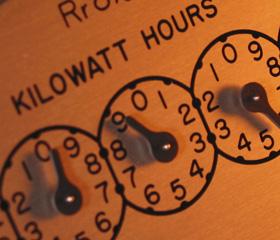Scrapping or winding back Australia’s Renewable Energy Target would lead to significant increases in electricity prices, while delivering a windfall profit to power companies of as much as $70 billion, according to new analysis from Bloomberg New Energy Finance.
The analysis shows that scrapping or reducing the renewable target would strongly favour power companies over consumers, causing power prices to surge after just a few years, due to less supply and competition in the power markets.
The BNEF study – a White Paper released by the Sydney analysis team on Monday – is not the first to come to this conclusion; among others, energy market analysts ROAM Consulting released a report last month saying that repealing the RET would would increase reliance on fossil fuelled generation and eventually push power prices higher.
But it is one of the first to put a figure on the enormous windfall Australia’s incumbent energy generators stand to gain if the current Abbott government review of the RET delivers the expected outcome.
If the RET is cut, says BNEF, existing electricity generators would receive an extra $11.5 billion in revenue between 2015 and 2020, and a massive $70.2 billion between 2015 and 2030.
If the target is reduced, the study finds that existing generators would receive an extra $6.1 billion between 2015 and 2020, and $40.3 billion between 2015-30 – the majority of the extra revenue flowing to coal-fired power stations, which dominate Australia’s current power mix.
“Cutting or reducing the Renewable Energy Target is likely to result in less competition among fossil-fuel power generators and strong future increases in the price of electricity,” said Kobad Bhavnagri, Bloomberg New Energy Finance’s head of Australia. “This helps to explain why many of Australia’s largest power companies are now pushing for a reduction in the target,” he said.
It also puts a price on the cost to consumers, noting that if the target is abolished, the average household can expect to pay at least $142 (6%) more on their annual power bill by 2030, as no savings are made to wholesale power prices but legacy generation assets continue to be compensated.
On top of this, power sector emissions would be 5 per cent higher and 11,100 fewer people would be employed, as small-scale PV remained the only viable clean energy industry.
Reducing the target, says BNEF, would shelve between $12 billion and $21 billion of investment in clean energy, lead to 3 per cent higher carbon emissions and power price increases of $16 a year (1%) in 2020 for the average household, and $68 (3%) a year in 2030.
As it stands now, however, BNEF says the 45TWh Renewable Energy Target would drive around $35 billion of clean energy investment by 2020, employ 25,000 workers each year, reduce emissions from power generation by 5 per cent and prevent future surges in power prices by supplying electricity for 20-25 years with no ongoing fuel costs.
The report notes that this renewable energy growth would come at minimal cost to end-consumers of around $0.5 billion a year from 2015-20, with 24,800 workers employed each year in construction and operations. But over the longer term – from 2015-30 – it would save end-consumers around $2 billion a year, as reductions to wholesale electricity prices outweighed the costs of the policy
“This is because renewables like wind and solar – which have no fuel costs – push down the price of producing power from coal and gas on the wholesale markets. In only four years, this more than offsets the cost of building the new wind and solar power stations under the Renewable Energy Target,” Bhavnagri said.
“For an accurate assessment you have to look at both sides of the equation – what do the assets cost to build, but then how much money do they save. Governments and power companies that stand to profit handsomely from abolition of the scheme have so far only talked about the costs. But that’s like only talking about the costs of buying a new house and forgetting that you don’t have to pay rent anymore,” he added.







